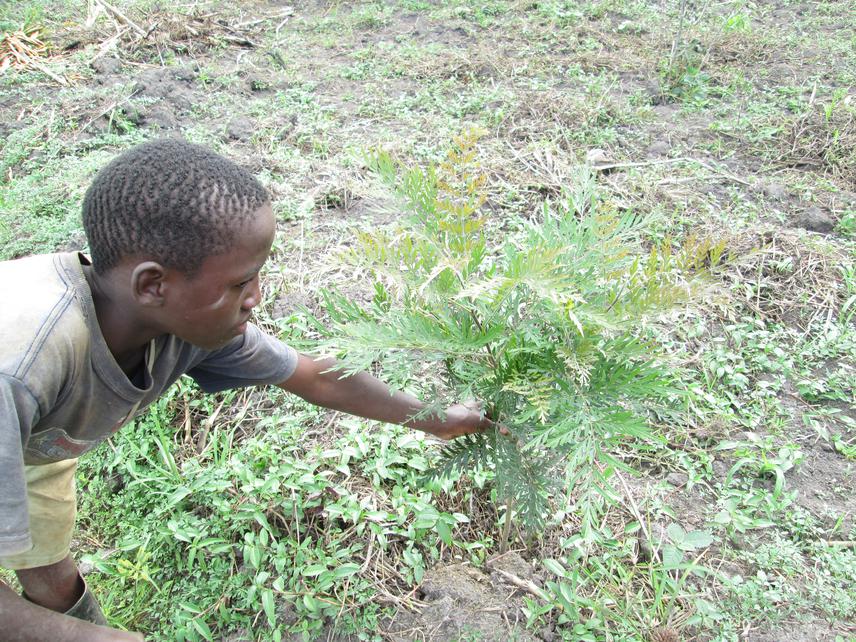Social media video featuring the project.
Namutebi Estellina
Other projects
30 Apr 2014
Ecological Enhancement of Indigenous Tree Species through Reforestation in Nalutuntu Village Mityana District
20 Apr 2016
Indigenous Tree Reforestation: A Path towards Biodiversity Conservation and Building Resilience to Climate Change
It takes continuous efforts to change the mind-set of a local community in environmental and biodiversity conservation. Besides, when natural disasters strike in some areas, the human community begins to re-think their actions towards the right direction. Even though our community has engaged in reforestation, I feel the number of trees planted with the challenges ahead might not rejuvenate environmental vitality as desired, because they are in a fragmented area. Therefore, my first aim is to create a community biodiversity habitat in a strategic area, in order to improve on community biodiversity conservation approaches. Another one is to promote biodiversity conservation in my community learning from the created biodiversity habitat (Community biodiversity conservation learning centre in Nalutuntu Sub-county). Briefly this habitat will accommodate biodiversity and thus reduce long dry spells by improving on rainfall formation thus, rejuvenating the current irregular planting seasons.

In my journey of biodiversity conservation, I have realized that despite the fact that all people in my community are gradually changing their mind-set, we need a community habitat to address the drought challenges and create harmony in the ecosystem. Thus, the community habitat will have the entire tree species, which will accommodate biodiversity, rejuvenate rainfall formation for the normal planting season, carbon sequestrate and provide farmers with soil fertility, medicine and food security. It will be designed in a way that is sustainable and a learning centre for adaptation measures to climate change, especially drought in my community of Kyakasengula village Nalutuntu Sub-county Mubende District Uganda.
This innovation will be in one piece of land of three quarter of an acre, surrounded with a Kearpo tree fence to allow easy monitoring. Then inside it, other tree species will be planted to accommodate all animals, birds, insects and many others that can interact in the same ecosystem. As well, honey bees will be introduced within, for crop pollination and income to the community members. The Community Biodiversity Conservation Habitat project aims at conserving the endangered species which are native to Uganda especially the central region namely: Red stinkwood (Prunus Aficana) which is a medicinal plant too, Bark cloth tree (Ficus natalensis), Red-hot poker (Erytrina abyssinica), Woman’s Tongoue or Siris Tree (Albizia Lebbeck), East African Greenheart (Warburgia Ugandensis), Umbrella Tree (Maesopsis eminii), Muvule (Milicia excelsa), Albizia spp (Nongo), Entada abyssinica A.Rich. (Mwolola), Albizia coriaria Welw. ex Oliv. (Mugavu) (Tabuti et al, 2012).
The native Hornbill called the Black-and-white-casqued hornbill (Bycanistes subcylindricus), which prefer to stay in dense forests like some in Kalangala district (Ssese Island in Lake Victoria), in open savannah grasslands and in the woodlands where they lay their eggs in trees like Woman’s Tongoue or Siris Tree (Albizia Lebbeck), East African Greenheart (Warburgia Ugandensis), Umbrella Tree (Maesopsis eminii) will be given another habitat in addition to Ssese Island. As well, the bees to be conserved are the honey bees (Apis mellifera adansonii) which are the stinging bees native to Uganda however; they are endangered due to use of chemicals in spraying gardens by the farmers. Consequently, I believe that these activities will reduce the pressure that has been exerted on the forest as a habitat for biodiversity.